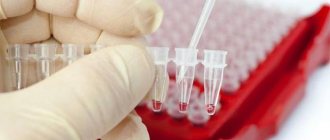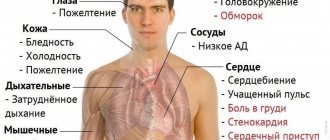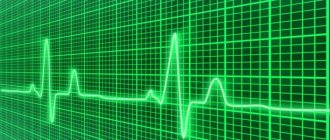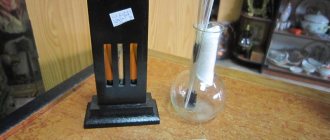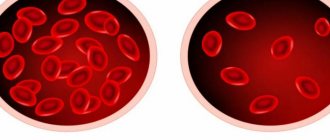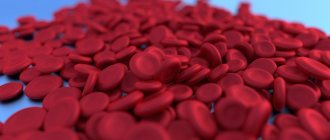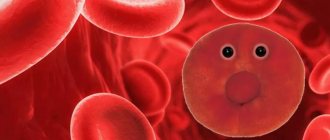Hemoglobin is a special blood protein found in red blood cells. Performs a vital function. Thanks to it, cells and tissues are saturated with oxygen, and gases and substances are exchanged in the body. Therefore, the importance of hemoglobin cannot be overestimated. If its level drops, health problems occur. This could be due to various reasons. So it is necessary to maintain a normal protein level and know ways to restore it.
Symptoms and causes of low hemoglobin
Insufficient hemoglobin content in the blood provokes frequent fatigue, malaise, drowsiness, loss of strength, and bad mood. Patients also complain of constant headache and dizziness. In addition, there is pallor of the skin, poor appetite, tinnitus, cold hands and feet, perversion of taste, pain in the muscles, and the frequent development of colds and viral infections.
In severe cases, the person may lose consciousness. Therefore, in this case, you should definitely visit a doctor and undergo the necessary tests.
Nothing happens for nothing. Including hemoglobin, it cannot decrease without reason. This deficiency in the body is indicated by serious diseases and certain conditions:
- Iron deficiency anemia in chronic form.
- Various bleeding.
- Long-term gastritis.
- Inflammatory bowel pathologies, dysbiosis.
- Time period after surgery.
- Oncology of blood cells.
- Neoplasms in the digestive tract.
- Hepatitis.
- Tuberculosis, pneumonia.
- Iron deficiency.
- Vitamin B12 and folic acid deficiency.
- Destruction of the structure of red blood cells due to severe pathologies.
- Following a diet that involves limiting a large amount of food.
The reasons for a decrease in hemoglobin can be various conditions. However, the greatest impact on protein deficiency is exerted by various blood losses due to surgery, trauma, wounds, and hemorrhoids.
In females, a decrease in hemoglobin most often occurs during menstruation, which lasts more than 5 days.
Deviations from the norm in men
In representatives of the stronger sex, the critical hemoglobin in the blood begins at 70 g/l. To maintain health and well-being, a man needs to keep it at a level of 130 g/l. Deviation from the norm is possible in several situations:
- smoking;
- accommodation in mountainous areas;
- chronic diseases;
- oncology;
- hard physical labor;
- taking steroids while playing sports.
Violations of the indicator are sometimes diagnosed when working in polluted conditions or constant contact with chemicals or dyes. In men after 50 years of age, hemoglobin decreases due to decreased metabolism and decreased production of red blood cells due to the aging of the body.
Important! According to doctors' observations, some men over 30 years of age experience a sharp drop in hemoglobin during sleep. After waking up, it returns to normal within 1–2 hours, but this fact must be taken into account when taking tests.
What is the norm for hemoglobin
As is already known, the protein is found in red blood cells and is responsible for the transport of oxygen in the body.
To maintain a normal level of health, eliminate fatigue, malaise and other characteristic signs of low hemoglobin, it is recommended to regularly take a blood test to determine protein.
The hemoglobin level is different for everyone, depending on age, gender and physiological characteristics of the body. So, for men this figure is 125-160 g/l, for women 115-140 g/l. In newborn babies, the protein level is in the range of 140-195 g/l; for children one year of age, hemoglobin is 110 g/l. And at school age, the blood protein level is at least 150 g/l.
In women, during pregnancy, hemoglobin drops and this is considered normal. At this time its value is about 110 g/l.
As a rule, a low rate is associated with iron deficiency anemia, which occurs in most people, regardless of age and gender.
What level is considered lethal?
Experts believe that the lethal level of hemoglobin for an adult is below 70 g/l. In fact, the patient dies not from a lack of protein, but from the development of complications due to oxygen starvation:
- metabolic disease;
- drop in immune defense;
- exacerbation of chronic diseases of the kidneys, liver, intestinal tract;
- severe arrhythmia or tachycardia.
With acute and massive blood loss and a drop in hemoglobin below 38 g/l, the patient dies from cerebral hypoxia. But with a slow decrease in iron-containing protein, symptoms appear gradually, the body adapts to the changes. Therefore, in medical practice there are many cases where a person with anemia at a level of 40–50 g/l works productively and leads a relatively active lifestyle. This is due to the individual characteristics of the patient’s cardiovascular and nervous system, his age and health.
Nutrition for low hemoglobin for older people
Even with drug therapy prescribed in cases of anemia, it is important for patients to provide a varied diet. Proper nutrition will help compensate for the lack of iron in the body with low hemoglobin in elderly patients, including:
- nuts, egg yolk, seafood, dried fruits, dark chocolate;
- apples, pomegranates, bananas, plums, peaches, persimmons, apricots, pears;
- white chicken meat, fresh fish, beef tongue, kidneys;
- pomegranate and carrot juice;
- buckwheat, beans, peas;
- black currants, strawberries, cranberries, blueberries.
For older people with low hemoglobin, it is important to create a balanced and nutritious menu. Only an integrated approach to the problem will help normalize the level of iron in the body.
Traditional recipes and treatment methods
Alternative medicine recommends using the following beneficial substances:
- Nettle tincture. To prepare nettle tincture, pour a tablespoon of dried raw material with boiling water in the amount of one glass and leave to infuse. This remedy is taken before meals three times throughout the day.
- A mixture of beets and black radish. Beets and black radish are grated and seasoned with vegetable oil. This salad not only has medicinal properties, but also has excellent taste.
- Infusion of rowan fruits. To prepare an infusion of rowan fruits, two tablespoons of plant material are brewed with 300 ml of boiling water. When the composition is infused, you need to drink it three times a day, a quarter glass.
- Dried fruit paste. A mixture of several varieties of dried fruits is poured with water overnight. In the morning they are minced in a meat grinder. The finished mass is eaten at least four times a day, a full tablespoon.
Prevention of anemia
It is necessary to monitor hemoglobin levels constantly and at any age. The well-being and performance of a person depend on the value of the indicator, so the danger of pathology should not be underestimated. To avoid anemia, it is important to remember the rules of prevention:
- proper and balanced nutrition;
- reducing portions of coffee and alcohol;
- physical activity;
- compliance with the drinking regime.
To fully absorb iron from food, it is necessary to consume meat products at the same time as greens and vegetables. A large amount of the beneficial element is found in liver, pork and mushrooms, legumes, oatmeal and corn grits, and offal. Instead of sweets, it is better to lean on dried fruits and cashew nuts, hazelnuts, and fresh blueberries. Folic acid and B vitamins strengthen the binding in the molecule and stimulate the production of hemoglobin.
During pregnancy, diet or toxicosis, it is necessary to take complex vitamins. They should be selected by a specialist based on tests and after examining the patient. Doctors do not recommend raising hemoglobin with drugs containing high iron content without medical indications. With proper nutrition, the indicator increases in 20–25 days to normal levels.
Important! To prevent anemia, nutrition should be varied at all times. For example, during fasting or a vegetarian diet, meat is replaced with dried mushrooms and legumes, desserts are prepared from honey with nuts, and beet salads.
A critical hemoglobin level often develops gradually and without significant symptoms. In this case, irreversible disturbances in the functioning of organs and systems occur, which have to be treated in a hospital for a long time. Therefore, it is necessary to promptly identify and eliminate the cause, and not neglect preventive measures and doctor’s recommendations.
Iron is different from iron
It is believed that the best way to increase hemoglobin levels is to eat more foods containing iron. Old folk recipes advise: cook liver dishes, eat carrots, beets, walnuts, apples, drink pomegranate juice, and you will quickly increase hemoglobin.
Actually this is not true. Because iron is different. Indeed, many fruits and vegetables and legumes contain a lot of iron, but it is poorly absorbed. As well as from the liver, where iron compounds are presented in the form of complex proteins that are not easy for the body to “take away”. The so-called heme iron, found only in meat and poultry, is best absorbed.
But in order for it to be absorbed, it is also important what the meat is eaten with. For example, if you serve pasta or porridge as a side dish, much less iron will be absorbed: cereals contain phytates that bind it. An excellent partner for meat dishes are vegetable side dishes made from zucchini, broccoli, onions, and herbs (they contain substances that stimulate hematopoiesis). It makes it difficult to absorb iron and calcium, so dairy and meat products are not compatible.
Fats inhibit hematopoiesis, so fatty meats and fish, and especially lard, are excluded. But butter and any vegetable oil - sunflower, olive, corn, pumpkin, etc. - should definitely be on your table. Do not drink tea immediately after meals - tannin binds iron, preventing it from being absorbed. And don’t get too carried away with coffee - this drink “washes” iron from the body.
Vitamins, especially C, help the absorption of iron. It is useful to drink orange and tomato juices every day. And eat more fruits and vegetables: the best suppliers of ascorbic acid are black currants, citrus fruits, kiwi, and bell peppers. In winter, when the vitamin C content in fresh fruits and vegetables drops sharply, sauerkraut and rosehip infusion perfectly replenish it.
Don't make mistakes!
For pills to work well, it is important to take them correctly. It is best in the second half of the day, it is at this time that iron is absorbed more actively. And no later than an hour before meals - once in the intestines, it should be absorbed without contacting food.
The duration of treatment depends on the severity of the anemia. While taking iron supplements, the stool may be dark in color - this is normal. But sometimes constipation or loose stools occur, and nausea occurs. If such symptoms persist for a long time, it is necessary to change the drug or reduce the dose. If you have an acute respiratory viral infection or the flu due to anemia, then you should not take iron supplements during illness.
After a month of treatment, a control blood test is done. If during this time the hemoglobin level has not increased or continues to decrease, the doctor suspends treatment and refers the patient for a new examination, since the diagnosis needs to be clarified - perhaps anemia is caused not by iron deficiency, but by other reasons.
Laboratory diagnosis of anemia
Various indicators in the analysis may indicate iron deficiency in the body, but a diagnosis of anemia can only be made through a set of laboratory tests.
Usually, if anemia is suspected, the patient is prescribed general and biochemical blood tests, where the main indicators are:
Serum iron
– this indicator reflects the amount of iron in the bloodstream, the reserve level of iron reserves in tissues;
Ferritin
– biomarker of iron deficiency conditions. The protein ferritin accumulates iron reserves that were not used by red blood cells. The level of this reserve is very important to know, since depletion of reserves gradually leads to the development of anemia. The good news is that the decrease in ferritin occurs gradually and early diagnosis of a person will prevent the progression of anemia;
Transferrin
– will indicate iron metabolism, the cause and type of developing anemia;
Vitamin B12
– will help determine whether iron from food is absorbed. Long-term B12 deficiency is dangerous, since the vitamin is necessary for the formation of blood cells and the proper functioning of the nervous system;
Total iron binding capacity of serum (TIBC)
– determines the amount of iron in the body and its relationship with other proteins. TIHR is considered a stable indicator that indicates the circulation of iron regardless of nutrition during the day (iron levels change during the day, so it is important to correctly interpret the overall “picture” in the body);
Hemoglobin and red blood cell levels
– the average amount of hemoglobin in red blood cells. Changes in these indicators are the first “bells” for the patient and doctor about pathological changes in the body.
Depending on the general condition and complaints of the patient, the doctor may prescribe individual blood tests or a whole range of tests.
“Symptoms of anemia are often mistaken for chronic fatigue or overwork, but it is important to be on the alert: identify it and begin treatment. Ferritin is the most important indicator in diagnosing anemia,” comments LabQuest laboratory diagnostics expert Yulia Sergeevna Latynina.
